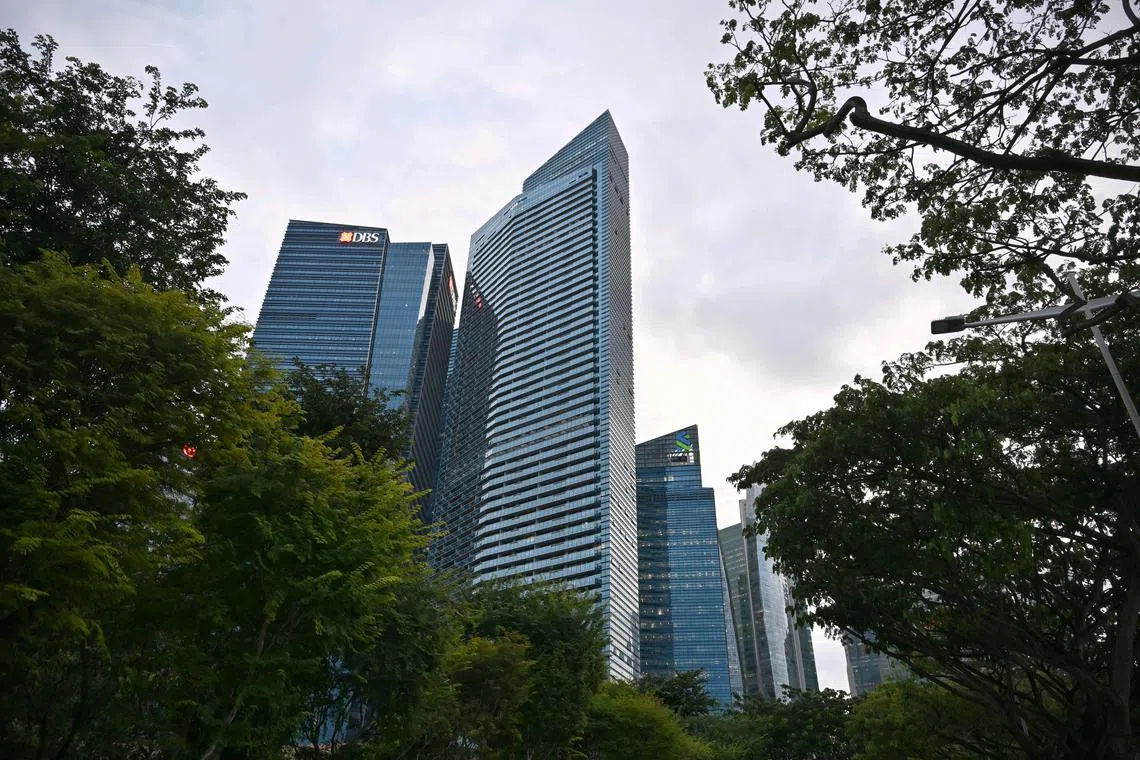Small condo units in Singapore draw steady demand, but are harder to resell
Sign up now: Get ST's newsletters delivered to your inbox

A 732-sq-ft leasehold unit at Marina Bay Residences (centre) sat on the market for three years.
ST PHOTO: ARIFFIN JAMAR
Follow topic:
- Smaller properties like one-bedder apartments face resale challenges, with slower price growth (3% annually) compared to larger units (5-8%).
- ERA data shows one-bedders comprise a larger share of core central region resales but are less profitable; 89% resold at profit versus 93-99% for larger units.
- Older one-bedders struggle against new launches squeezing more rooms into smaller spaces; limited resale investor demand complicates exit strategies.
AI generated
SINGAPORE - When a French national living in Singapore put up her one-bedroom apartment for sale in 2022, private home prices were climbing and she expected a quick sale.
Instead, the 732 sq ft leasehold unit at Marina Bay Residences sat on the market for three years.
Offers fell short of her expectations and the 51-year-old investor, who asked not to be named, eventually accepted $1.6 million in August 2025 – barely above the $1.55 million she had paid in 2016.
Her experience underscores the broader challenges some owners face in offloading one-bedder and studio apartments, which tend to be smaller and targeted at a niche demographic.
While demand for these smaller units has been steady, data and market observations show that they generally see slower price growth, take a longer time to resell than larger units, and net their owners less profit.
About one in four resale condominium transactions between 2019 and 2025 involved a studio or one-bedder unit, according to data from ERA Research and Market Intelligence and the Urban Redevelopment Authority (URA).
This data covered 146 non-landed private residential projects completed from 2000, which accounted for a total of 24,327 resale transactions.
Projects include both freehold and leasehold developments like Sophia Residence, One Amber, Marina Bay Residences, Reflections at Keppel Bay, Duo Residences, Martin Modern, JadeScape and One Pearl Bank.
To ensure meaningful comparisons, only projects with a significant number of sales were included. The threshold for inclusion was at least 50 transactions in the core central region (CCR) and 100 transactions in the rest of central region (RCR) and outside central region (OCR), said Ms Wong Shanting, head of research and market intelligence at ERA Singapore.
The study found that one-bedder and studio units made up a larger share of total resale transactions in the CCR, rising from an average of about 30 per cent of total sales between 2019 and 2022 to about 35 per cent since 2023.
However, the OCR recorded the most transactions in absolute numbers. January to July 2025 saw 352 one-bedder and studio units sold in the OCR, compared with 209 in the RCR and 70 in the CCR.
The trade-offs of buying small
Smaller units appeal mainly to singles who see them as an affordable path to home ownership without taking on heavy debt, and investors who favour them for their relatively attractive rents, said Ms Wong.
But she also noted that smaller units see slower price growth and are less profitable than larger apartments.
From 2019 to 2024, prices of studios and one-bedders rose by about 3 per cent a year on average, compared with 5 per cent to 8 per cent annually for two- to five-bedroom units. It was also harder for sellers to turn a profit. About 89 per cent of one-bedder and studio apartments were resold at a profit, compared with 93 per cent for two-bedders, 95 per cent for three- and four-bedders, and 99 per cent for five-bedders.
While smaller units trail larger homes in price growth and profitability, Ms Wong said their lower purchase cost keeps them attractive to certain buyers, particularly those priced out of bigger apartments.
Smaller units appeal to a narrower pool of buyers, so prices move more slowly, Ms Wong explained.
For one thing, their compact layouts limit flexibility, making them less suitable once singles and young couples outgrow the space.
Said Ms Wong: “More buyers are also willing to stretch their budget for a two-bedroom unit, which offers more space and greater flexibility in the longer term.”
Property agents told The Straits Times that one-bedders built more than 10 years ago are increasingly challenged by new launches that squeeze more rooms into smaller footprints.
Ms Nicole Teo, deputy branch associate director of OrangeTee & Tie, said: “One-bedder sellers today face tough competition from new projects that manage to fit three bedrooms into just 800 to 900 sq ft, drastically changing the value game, especially for investor buyers.”
She added that many small units are bought as affordable investment properties at launch, but resale demand from investors is limited.
“When you buy an investment property, always think about your exit strategy,” she said.
As at Sept 5, there were listings for 296 studios and 4,661 one-bedders built between 2010 and 2025 for sale on property portal PropertyGuru. These figures are not unique listings and could include reposts of the same property.
Property agents said this supply reflects both investor activity and the challenges some owners face in selling their units.
Ms Wong said: “One-bedroom and studio units are likely to experience a rise in transactions, driven by declining household sizes, although this increase probably won’t be substantial.
“Increasing home prices could encourage buyers to gravitate towards the comparatively more affordable entry-level prices of these smaller units.”

For sellers, however, the French investor’s case is a reminder that small units may be more affordable, but selling them may be challenging.
“I had thought I was making a sound investment in the heart of Singapore’s financial district, as the unit even came with a corporate tenant,” the investor said.
“What I didn’t expect was, just a year later, the tenant would not renew the lease. From then on, it was a struggle to rent out the unit at a good price,” she said.
Rent often fell short of covering the mortgage, while condominium fees and bank interest piled up, she added.
After nearly a decade of ownership and three years trying to sell the unit, the investor said: “It was absolutely not a good investment. I sold it to stop losing money.”


